Supreme Court Determines Trademark Tacking is Jury Issue - Reconfirms Markman Claim Construction is for the Judge
January 29, 2015
By: Susan G. L. Glovsky and John L. DuPré
Hamilton Brook Smith Reynolds Alert
- The first party to use a trademark is generally determined to have superior rights over later users.
- The trademark doctrine of "tacking" allows a trademark owner to gain superior rights based on earlier use of another mark that "create[s] the same, continuing commercial impression" and is "legal equivalent."
- The Supreme Court decided that it is the jury, not the judge, who determines whether a mark is a "legal equivalent" so that tacking is available.
While the U.S. Supreme Court has tackled a number of patent issues over the past few terms, it has been a while since a trademark issue has been before the Justices. This is changing with a significant trademark decision that issued on January 21, 2015, regarding the trademark doctrine called "tacking." Another trademark decision, on the question of the binding effect of determinations by the Trademark Office Board on questions of likelihood of confusion, should issue from the Supreme Court later in the Court's term.
The first party to use a trademark is generally determined to have superior rights over later users. The decision that just issued from the Supreme Court deals with the circumstances under which a party can rely on early use of a different mark, called "tacking," to establish its right to priority.
The concept of tacking allows a trademark owner to establish an earlier priority and the resulting superior rights, based on use of another mark that is considered to be a "legal equivalent." To be a legal equivalent, a mark used earlier has to "create the same, continuing commercial impression." In this case, Hana Bank's prior use was of "Hana Overseas Korean Club," with "Hana Bank" appearing in Korean characters. Hana Bank advocated it was entitled to priority because it could tack back to this earlier use, putting it in a superior position to Hana Financial. The jury allowed the tacking and found in favor of Hana Bank.
In a unanimous opinion, the Supreme Court decided that it is the jury, not the judge, who determines whether tacking is available. In Hana Financial v. Hana Bank et al., the Supreme Court recently affirmed a decision of the Ninth Circuit and resolved a split among the Circuit Courts of Appeal. The Federal Circuit was among the Circuit Courts that had ascribed the trademark tacking issue to the judge.
Like most issues in trademark law, a mark's commercial impression is viewed through the eyes of a consumer. The Supreme Court decided that understanding the impression that a mark conveys "falls comfortably within the ken of a jury." Still, the Supreme Court did not rule out the possibility that a judge may decide a tacking question on summary judgment or judgment as a matter of law, where the facts warrant such a resolution.
For future intellectual property litigants, the decision includes a message not to advocate positions that are inconsistent with non-intellectual property legal decisions. In the course of rejecting multiple arguments asserted by the unsuccessful party, the Supreme Court continued its message appearing in prior patent cases that there should not be a distinction between intellectual property law and other areas of law. For example, the Supreme Court stated: "it is not at all clear ... why a tacking determination [by a jury] in a particular case will 'create new law' any more than will a jury verdict in a tort case, a contract dispute, or a criminal proceeding."
Perhaps to negate any thought that its decision in Hana, or its decision the day before in Teva (see our Teva alert), changed the Court's prior decision on the judge/jury role in patent cases as set forth in Markman, the Court made clear that its Markman decision remains unchanged (see footnote 2). In Markman, the Supreme Court in 1996 decided that judges construe patent claims. In view of the apparent disparate result between Hana (jury) and Markman (judge), the Supreme Court reconfirmed its decision in Markman and explained that the construction of a written instrument, such as a patent, is one of those things that judges often do, while in contrast, the tacking inquiry in Hana involves a factual judgment about whether two marks give the same impression to consumers, which, according to the Court, is not one of those things that judges often do better than jurors.





